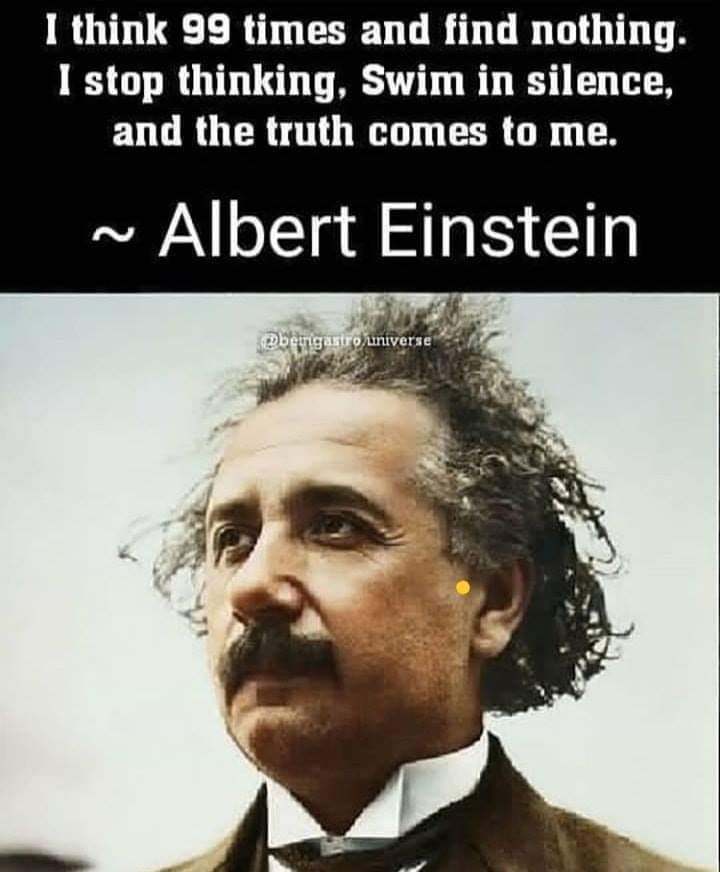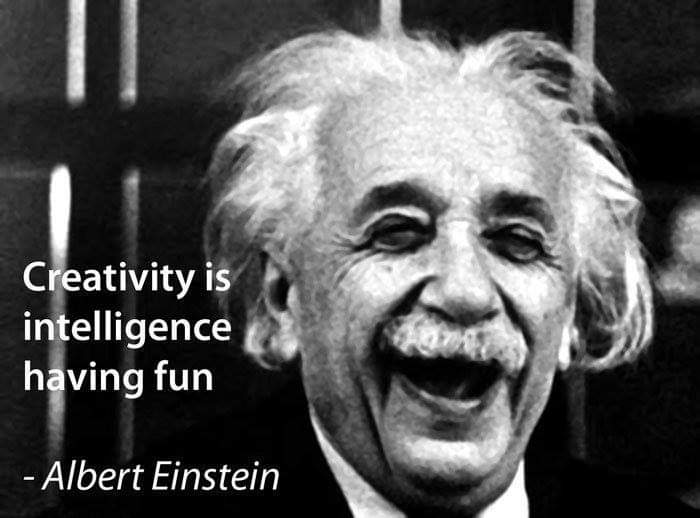
I have always been fascinated by the question of how progress happens, how new ideas and devices come about. In the past, great leaps forward would be made and then forgotten for centuries or simply not noticed at all. Insights and innovations would burst upon the scene in China, the Hindu valley, Meso-America, Egypt, the Hellenic golden age, and Rome before being lost, or so it seemed. The Islamic Golden Age (750 to 1250 CE) was a particularly robust period of thought and intellectual ferment where great leaps in medicine, astronomy, mathematics, optics, and the scientific method were made. Then, after the intellectual and political center of Baghdad fell to the Mongols in the 13th century, much of that progress faded from view until revived in the European Renasissance some two or three centuries down the road.
What we generally call insight and innovation, I like to think of as ‘lateral thinking’ where we look upon what we already know in new ways. In the extreme, where something seems unique or at least very original, we might call it ‘orthogonal thinking’ but why quibble. Now, of course, what we call progress is more likely to be capitalized, exploited, and routinized in our daily lives. Science and innovation is big business and we have the means to both retain, disseminate, and build on new innovations and insights. Even when I was a kid, it was axiomatic to say that more scientists were living at that moment than had lived during the entire prior history of mankind.
Until the very end of the 19th century, education often focused on the classics and antiquated knowledge, a kind of rear-view mirror perspective. Formal education ended after four years of higher-level studies. It was as if all that was needed to be known was already known and retrievable from the giants of the past. We yet had pretences that individuals might be polymaths and knowledgable about many aspects of the natural sciences and the literary arts. As I have mentioned before, graduate schools with specialized and advanced curricula in defined content areas only emerged at Johns Hopkins and then Clark University in the 1870s and 1880s.
Today, it seems as if nothing is beyond science and those intrepid seekers of truth working at the frontiers of knowledge. We have come a long way from the quotes I offer below which cast a more limited tone on the future. These pessimistic predictions come from a book I just finished on the development of the LASER (an acronym for Light Amplification by Stimulated Emission of Radiation). The man who came up with this ingenius device in 1960, which is now found in applications from common communication technologies found in the home to advanced medical tools, was Ted Maiman, a scientist working at Hughes Laboratory.
Many others at more famous academic institutions were also trying to get there first but had failed. Who knows, perhaps others would have gotten the brass ring soon if Ted had not grabbed it first. Most inventions in the modern era are being worked on by multiple people and likely would have been ‘discovered’ by someone. Still, a lecture scheduled at an upcoming major conference in that year apparently would have argued that the Laser concept was beyond our reach and could not be realized. The talk was hastily cancelled when Maiman unexpectedly made the Laser a practical reality. The academic saved from making such an embarrassing prediction in public is not alone. Check out these beauties:
“Everything that can be invented has been invented.”
Said in 1889 by Charles Duel, the Director of the United States patent Office.
“Heavier than air flying machines are impossible.”
Said in 1895 by Lord Kelvin, President of the Royal Society.
“There is no likelihood that man can ever tap the power of the atom.”
Said in 1923 by Robert Millikin, the winner of a Nobel Prize in physics.
Let me be very clear, I have never invented anything. You need technical and mathematical skills in which I am totally lacking to do that. However, I have had some creative impulses that blossomed into new ways of looking at problems and in expressing semi-ingenious possibilities for getting around stumbling blocks. The social issues on which I worked were highly problematic, often representing impossible Gordion Knots for academics and policy wonks alike.
I won’t beat this into the ground but let me site one example. I did generate rather new or unique ways of looking at at least one intractable social problem. In an article titled Child Poverty: Progress or Paralysis (FOCUS: IRP, 1993), I laid out a new conceptual scheme for looking at welfare reform, an issue that was tearing the country apart at the time. I developed an ‘onion metaphor’ to examine the challenge, relying on the heterogeneity of the poor which contradicted the homogenous picture of the population most used. Simple, no doubt. But the way I employed this visual representation enabled me to argue that approaches that were seemingly at odds with one another could be seen as complementary and not competing solutions.
Now, I happened to be in Washington (on leave from U.W. working for a year in the Clinton administration) at the time the piece hit the streets. It proved to be a smash hit out there and I soon became known as the ‘onion man.’ Really! The General Accountability Office (GAO) had me in for a talk on it and used it for years when Congressional requests for information on welfare came in to them. For a number of years, when I gave talks around the country, people wanted to hear about my ‘onion metaphor.’ Turns out that this vegetable really can bring you to tears.
This wasn’t my only creative moment but special enough for me to learn something from it as well as from my more recent writing of non-academic literary works. Being creative is an inscrutable and mysterious process. You cannot will it. The onion metaphor hit me in Burlington Vermont of all places. I had agreed to participate in a State Conference on welfare reform that would include a broad range of officials from many different disciplines and agencies. They were not all on the same page by any means.
As I was registering at the hotel the night before, one of the organizers came up to me to ask if I could give an introductory talk to get everything going. I smiled thinking some advanced notice would have been nice but, being a nice guy, I said sure. So, that night, I struggled with how to get such a diverse set of different institutional actors with distinct backgrounds thinking about a topic that had defied any reasonable dialogue even among experts in the field. As I mused on this challenge in bed, I fought off sleep after a day of travel. Suddenly, the notion of the onion metaphor came to me. It seemed silly but, in the moment, it was the best I was likely to come up with to sound less like an idiot in the morning. I hoped so at least.
I once had a professor who repeatedly said ‘you don’t know something until you can explain it to others.’ It took me a while to appreciate just how right he was. I’ve found over time that three elements seem to be asociated with ‘creativity’ for want of a better term. The first, as Einstein said, is to stop thinking hard on things and let your mind wander. The second is to get out of your usual habitat, or discipline, and absorb input from diverse sources. And the third is to to explain, or try to, what is going on inside your own head to others though, I must admit, what goes on inside my head is fascinating.
When I am writing fiction, my imagination leaps ahead especially when I am not trying … when I am just walking about or halfway to slumber. Then I have to decide whether to stop and write it down or hope I will recall it when I get back to my laptop. Moreover, when I was working on tough welfare reform issues or the design of new humans service systems, I benefited greatly from mixing traditional academic sources with real life experiences. Most of my colleagues felt that all worthy thought would be found in peer reviewed journals. They seldom confronted the real world, and surely spent little time there. Obviously, there is good stuff in the formal literature but it is often narrow and provincial and only covers part of reality.
Great leaps demand the challenges that come from the intersection of science and experience. You need both in most cases. Jenner came across the vaccine concept for the dreaded smallpox virus after listening to a milkmaid exclaim that she would never get the smallpox since she already had the cowpox, an association well known among farm hands. Einstein jumped foreward intellectually while working in a Swiss patent office since he could not get an academic appointment after obtaining his physics degree. Not securing a university position was likely the best bit of luck in his life. And don’t forget that the germ of my ‘Onion’ metaphor came in a Burlington Vermont hotel room as I was dozing off. And then I started using this conceptual seed in many talks as it evolved into a stronger concept. I used it so often, I almost didn’t write it up in my Focus article since I thought everyone had heard it by then. Thankfully, a graduate student working with me convinced me otherwise.
I take my little epiphanies very seriously, especially the one about letting new connections and insights into your head by relaxing and focusing less directly on an issue or topic. That is precisedly why I take so many naps at this stage in my life. No great breakthroughs recently but I remain hopeful. Perhaps today’s nap will be the magical one.
